As an Amazon Associate, I earn from qualifying purchases. In addition, I participate in several other affiliate programs that allow me to earn while I recommend products I love.
Just realized that you don’t have butter to make cookies?
Wondering if it’s even possible to make cookies without butter?
In this expert cookie baking guide, we’re talking to all of you bakers who suddenly realized that you don’t actually have one of the main ingredients in the recipe!
That’s right, we’re covering whether you an make cookies without butter and butter substitutions in cookies.
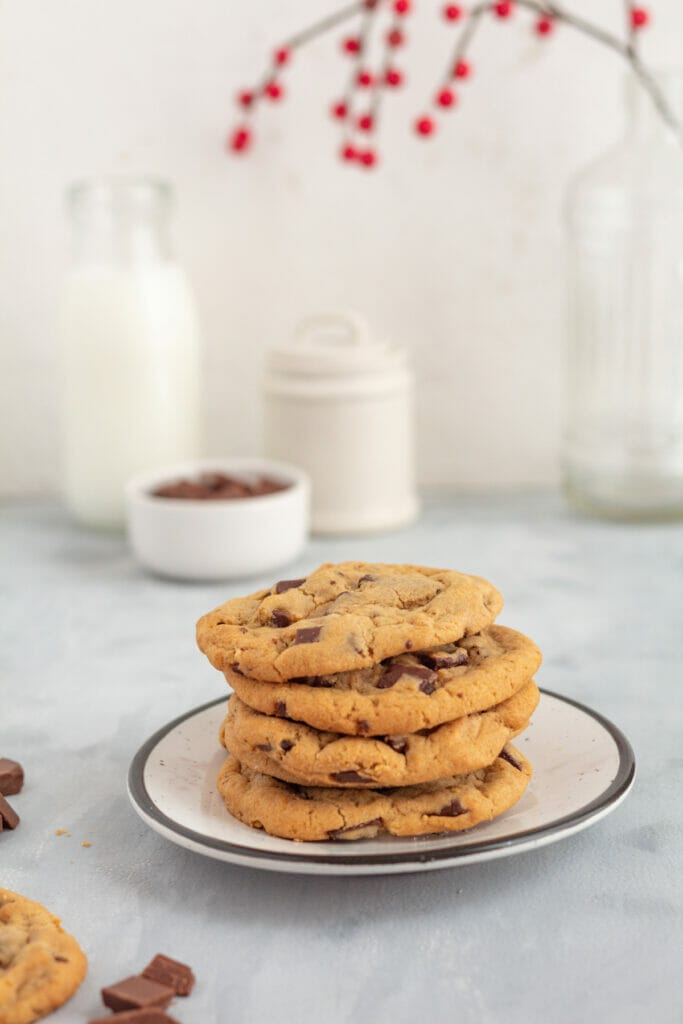
You probably already know that baking can be very finnicky, as there are lots of chemical interactions that take place to make sure that you end up with a cookie and not a cake, brownie, or general mess.
What you should do in baking is often different than what you can do, though, and sometimes it’s possible to swap out similar ingredients and sometimes it’s not.

The answer to whether you can bake cookies without butter is yes, but you either need to substitute it for something or find a recipe that doesn’t require it (which is possible!).
Our Favorite Quirky Kitchen Gadgets
- Select-A-Spice Auto-Measure Carousel – Get your exact spice amount without measuring spoons with this spice carousel. Simply twist the dial for a perfect 1/4 teaspoon measurement!
- Silicone Utensil Rest with Drip Pad – This utensil rest keeps my countertops neat & drip-free!
- Snap N Strain Pot Strainer and Pasta Strainer – I love this strainer because it fits on all pots and pans while also being compact and easy to use!
- Herb Scissors Set – I use these scissors to cut and mince fresh herbs directly into any dish without the tedious work of cutting each herb or dirtying up a cutting board.
- Knife Sharpener – I love how quirky and nifty this rhino shaped knife sharpener is. It definitely puts the FUN in functional!
Can you make cookies without butter?
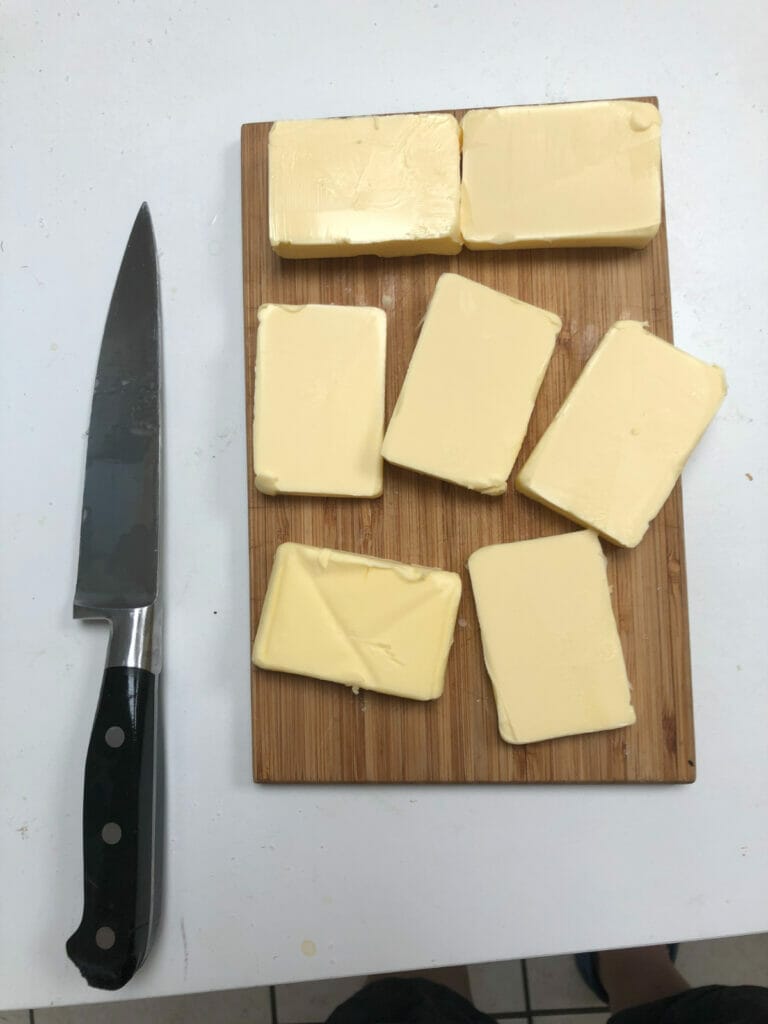
We’re going to start with the very basics here.
In terms of actually ending up with a cookie at the end, is it possible to leave butter out of the recipe?
The answer is no: if you just leave out butter completely, you’re not going to end up with a cookie.
You would, however, get a strange mix of flour and eggs, but you won’t end up with any sort of cookie dough, and thus, no cookies!
There are cookie recipes, though, that were designed to not even require butter as well as other things you can try, so all is not lost.
What is the impact of butter on cookies?
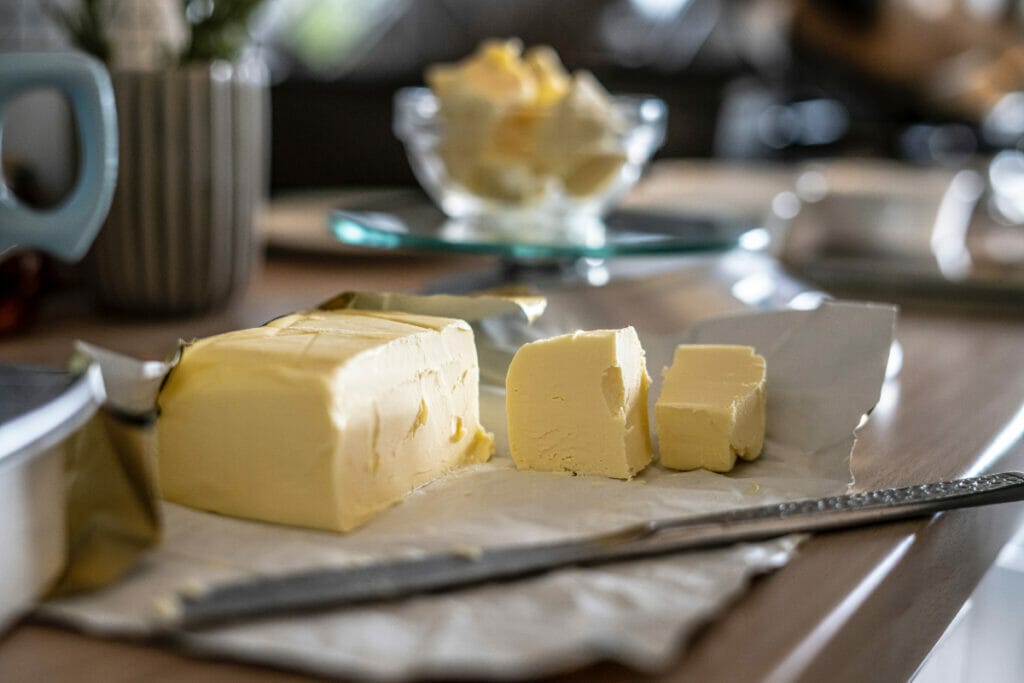
What does butter do in cookies?
In most cookies, including the famous “drop cookies” like chocolate chip cookies and sugar cookies, butter is an essential ingredient.
The fat in the butter helps combine those dry ingredients and protect the flour from other liquids in the dough.
It’s what makes your cookies chewy instead of tough, and as it melts during the baking process, it helps soften your cookies as the water and milk solids from the butter are incorporated into the dough.
It also is a huge flavor bonus: butter gives you a decadent and rich flavor, which you will have become used to in cookies!
The results if you leave butter out of cookies
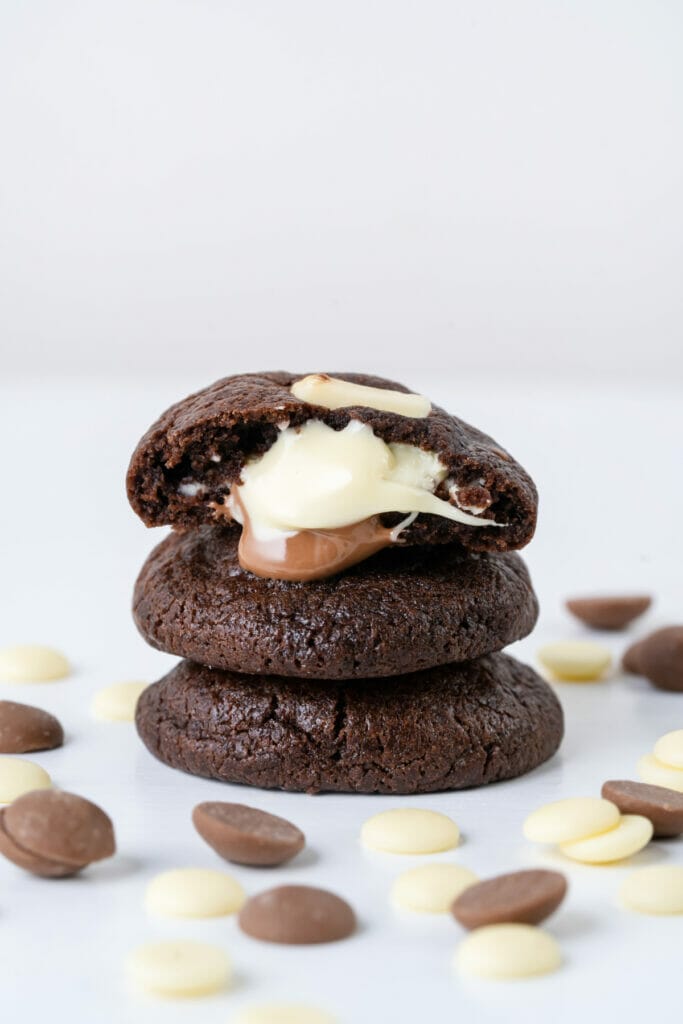
If you left butter out of your cookie, besides the fact that it just really wouldn’t be able to form into a dough, you would have a crumbly and dry hockey puck of tough gluten.
There would be little flavor, richness, and it would mostly just be flour and egg falling everywhere.
Sorry, but if your recipe includes butter, it’s not possible to just leave it out.
What to use instead of butter in cookies
If you don’t have butter in your fridge for your cookies, there are a couple of things you can try substituting it for to see if you can still salvage the recipes.
1. Spread Butter (at times)
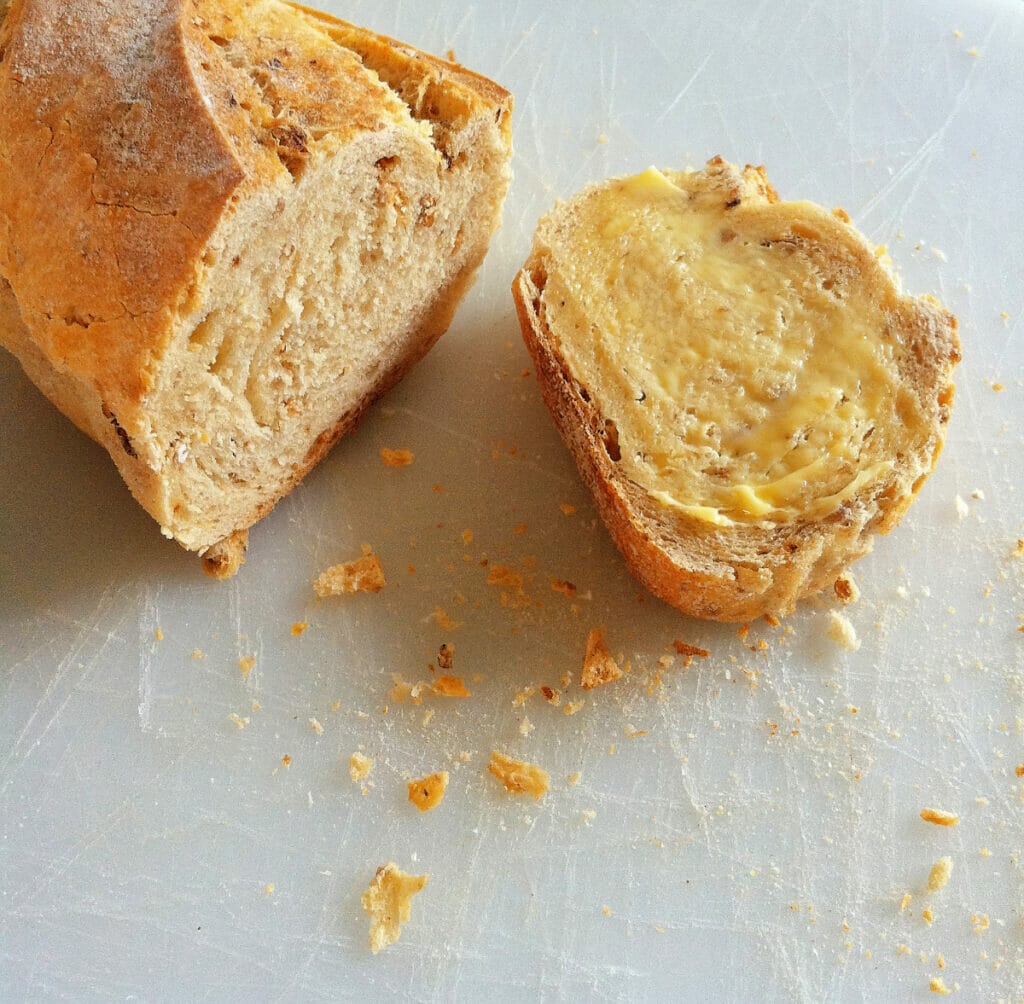
You know the type of butter that is totally fake and comes in a spreadable container? The kind of butter you put on toast and can sometimes be used in cooking?
This butter doesn’t resemble the butter that is used in baking, as it often has too much water content and won’t help your cookies hold their shape.
It will likely end up causing your cookies to spread all over the baking tray.
However, some bakers do report some level of success with it, so if it’s all you have, go ahead and try it, but we would suggest finding a recipe that doesn’t include butter already if possible.
2. Canola Oil or Olive Oil
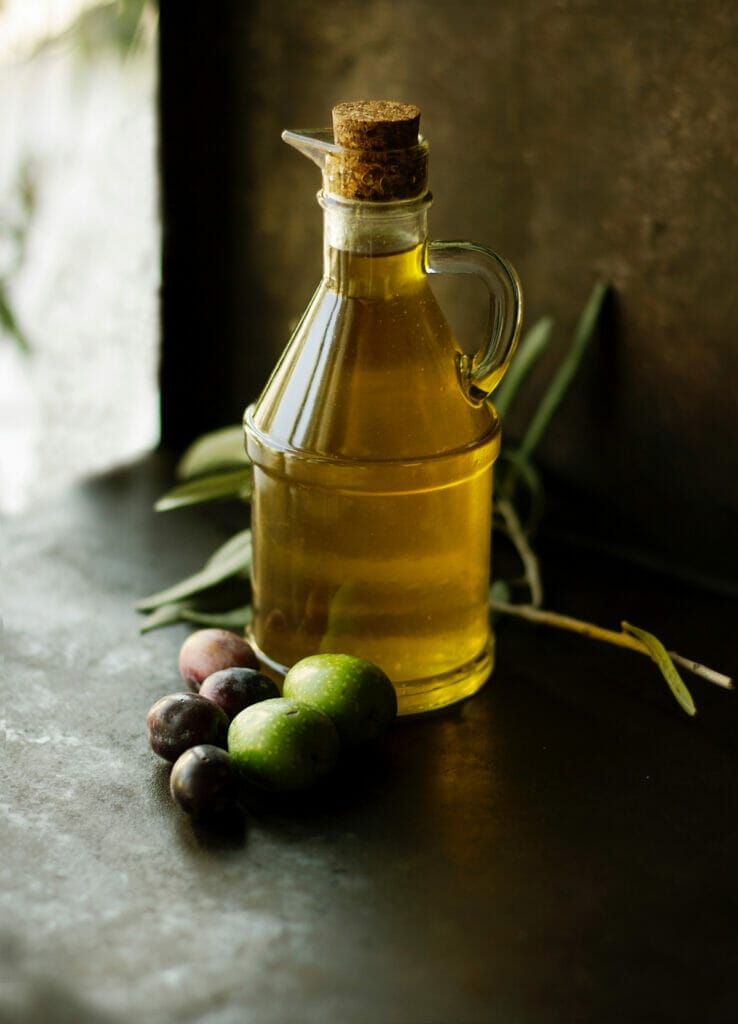
The other ingredient that is often used instead of butter in recipes is some type of oil.
Oil is a fat, which helps give the cookie its moistness and a bit of structure, just like butter.
You can go ahead and try and substitute oil in your baking instead of butter, but you should know a few things.
Firstly, the cookies will come out a different texture, possibly more cakey, and it won’t have that same decadent richness as a cookie made with butter.
That being said, it’s one of the better substitution options if you’re willing to put up with those differences as it provides some of the same properties as butter.
3. Peanut Butter
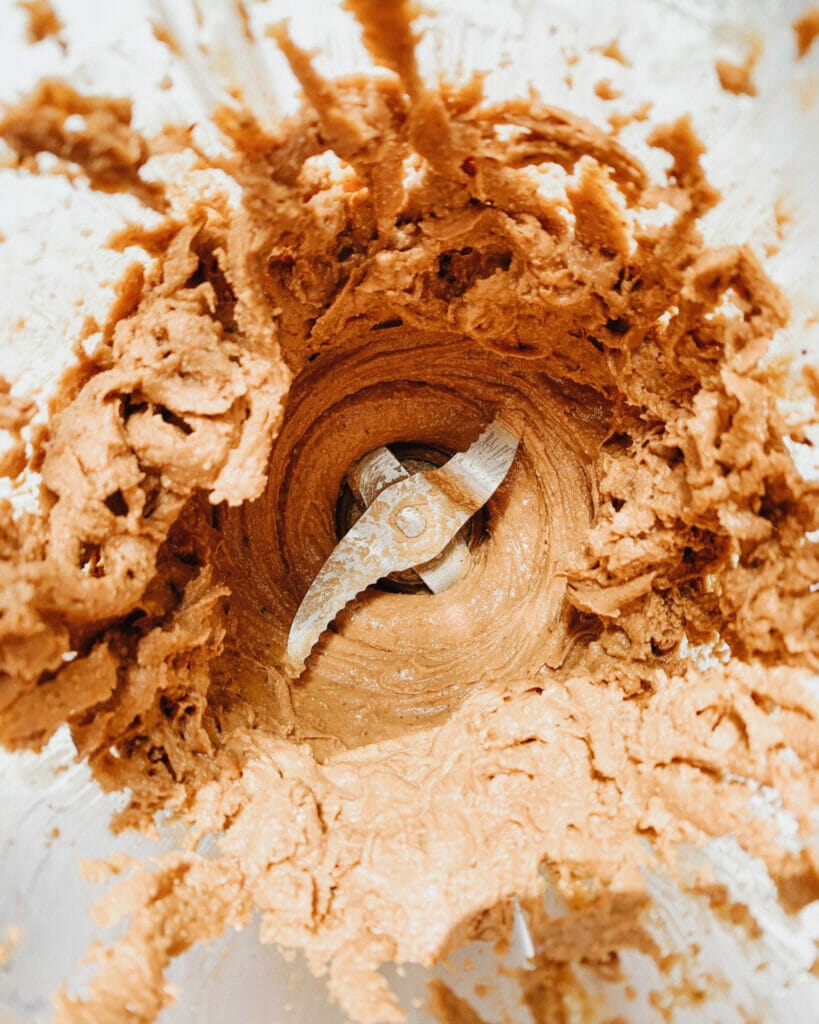
Got peanut butter?
Got a recipe you wouldn’t mind making taste like peanut butter?
Try peanut butter as a butter substitution in cookies!
And not just if you’re already making peanut butter cookies, but if you’re making another type of cookie that would easily work with a peanut butter flavor.
Namely, chocolate cookies or chocolate chip cookies could be turned into a bit of a peanut butter chocolate concoction with this substitution.
Don’t do this in something like a sugar cookie unless you want a really weird taste, but keep it in mind for other cookies to help incorporate that moisture and add structure to your cookies and give you a way to combine the flour and other ingredients.
4. Shortening
One of the most popular butter substitutes in cookies is actually shortening.
You will get a different texture to your cookie (cakier), but it’s probably the best swap on the list.
Your cookies should hold their shape, as well as be moist, and some bakers actually make this swap on purpose if they want a softer cookie or that puffiness that shortening gives you that is not always possible with butter.
Just swap out the same amount of shortening for the same amount of butter and see what happens!
Hey! Want more expert cookie baking hacks? Check these out!
- Exactly how long homemade cookies last
- Can you bake cookies on aluminum foil?
- 7 easy ways to soften hard cookies
- Oops! Burned cookies! Here are 9 ways to fix them
- Help! My cookie dough is crumbly!
- Why are my cookies burnt on the bottom?
- How long does cookie dough last?
- Tips on Making Your Cookies Chewier
- How to avoid cakey cookies
- Exactly how to freeze cookie dough
- How long should you chill cookie dough?
- Tips on Making your Cookies Super Moist
- What to do if you put too much butter in your cookie dough
- How to bake frozen cookie dough
- Expert cookie storage tips
- Using salted or unsalted butter in cookies
- Help! How to make cookies without vanilla extract
- Help! How to make cookies without brown sugar
- How to use cake flour in cookies
- Help! How do I make cookies without eggs?
- Can you make cookies without baking soda?
- Can you use bread flour in cookies?
- Exactly how to make cookies more puffy
- How to make cookies without baking powder
- How to fix wet and sticky cookie dough
